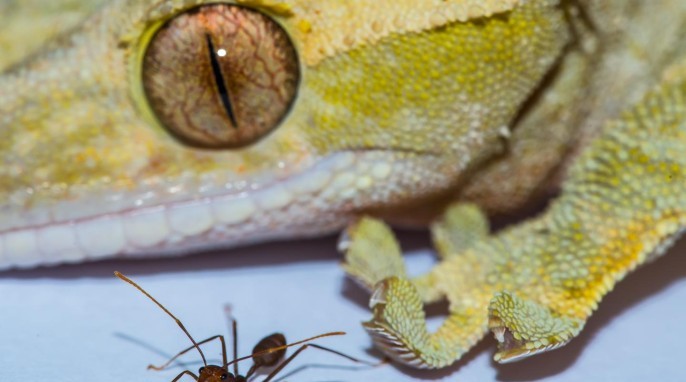Why Spiderman Can’t Exist, but a Gecko Can
Want to climb walls like Spiderman or a gecko? Not today, but maybe some day. There is a size limit on who or what can stick to walls.
By Kate Stone
With all due respect to Spiderman, it turns out that physics is against our wall-crawling, web-slinging hero. There is a size limit on who or what can stick to walls: the size of a gecko.
The size of your gecko matters
David Labonte and his team at the University of Cambridge Department of Zoology have been wondering why geckos are the largest animals able to scale smooth vertical walls. Geckos have highly effective and complex foot pads that they use to climb smooth, vertical surfaces. However, anything larger than a gecko would need to have unwieldy large and sticky foot pads. The scientists estimate that to climb a wall like Spiderman does, a human would need to have adhesive pads covering 40 percent of their body surface.


“If a human, for example, wanted to walk up a wall the way a gecko does, we’d need impractically large sticky feet. Our shoes would need to be a European size 145 or a US size 114,” says Walter Federle from the Cambridge Department of Zoology.
RELATED: HOW DOES TISSUE REGENERATE?
In different sizes of climbing animals, from tiny mites and spiders to tree frogs and geckos, the percentage of body surface covered by adhesive footpads increases as body size increases. This increasing ratio sets a limit to the size of animal that can scale walls, because larger animals would require impossibly big feet. While such an animal might make for terrific science fiction, such a body would not work in the world as we know it.
Agile Robots Inspired by Gecko Feet
AGILE ROBOTS INSPIRED BY GECKO FEET
Hope for Would-Be Wall Climbers
The researchers are studying the feet of geckos, insects, and other wall-climbing animals in hopes of developing more large-scale, synthetic adhesives. For example, if you want to climb a smooth wall and can’t make your sticky pads large enough to hold your body weight, there is an alternative: make your pads a lot more sticky.
“We noticed that within closely related species pad size was not increasing fast enough to match body size, probably a result of evolutionary constraints. Yet these animals can still stick to walls,” says Christofer Clemente from the University of the Sunshine Coast.
“Within frogs, we found that they have switched to this second option of making pads stickier rather than bigger. It’s remarkable that we see two different evolutionary solutions to the problem of getting big and sticking to walls,” says Clemente.
So there may still be hope for Spiderman.
The study about gecko foot pads is published in the journal Proceedings of the National Academy of Sciences. Funding for this research was provided by the Biotechnology and Biological Sciences Research Council, Human Frontier Science Programme, Denman Baynes Senior Research Fellowship, and Discovery Early Career.




